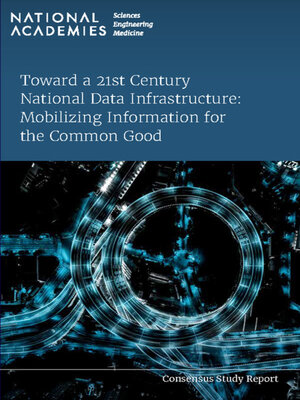Toward a 21st Century National Data Infrastructure
ebook ∣ Mobilizing Information for the Common Good
By National Academies of Sciences, Engineering, and Medicine

Sign up to save your library
With an OverDrive account, you can save your favorite libraries for at-a-glance information about availability. Find out more about OverDrive accounts.
Find this title in Libby, the library reading app by OverDrive.



Search for a digital library with this title
Title found at these libraries:
| Library Name | Distance |
|---|---|
| Loading... |
Historically, the U.S. national data infrastructure has relied on the operations of the federal statistical system and the data assets that it holds. Throughout the 20th century, federal statistical agencies aggregated survey responses of households and businesses to produce information about the nation and diverse subpopulations. The statistics created from such surveys provide most of what people know about the well-being of society, including health, education, employment, safety, housing, and food security. The surveys also contribute to an infrastructure for empirical social- and economic-sciences research. Research using survey-response data, with strict privacy protections, led to important discoveries about the causes and consequences of important societal challenges and also informed policymakers. Like other infrastructure, people can easily take these essential statistics for granted. Only when they are threatened do people recognize the need to protect them.
Toward a 21st Century National Data Infrastructure: Mobilizing Information for the Common Good develops a vision for a new data infrastructure for national statistics and social and economic research in the 21st century. This report describes how the country can improve the statistical information so critical to shaping the nation's future, by mobilizing data assets and blending them with existing survey data.







